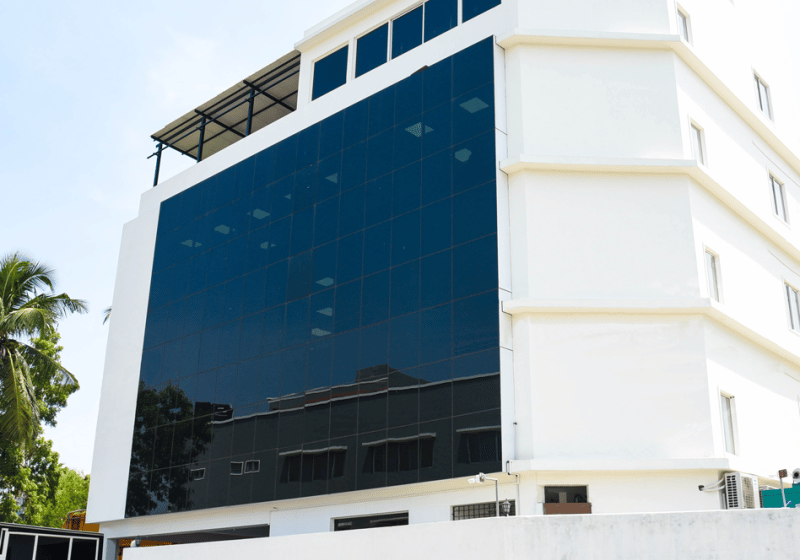An outline of the growing demand for VT in different sectors
With increasing urbanization, high land cost pushes Indian cities to grow vertically. According to estimates, more than 52% of high rises built recently in the most populous seven cities in the country were taller than 20 floors. The Mumbai Metropolitan Region topped the list: more than 75% of its 734 building projects launched in fiscal year 2019-2020 (April 2019-March 2020) were in this high-rise category. In this same period, the National Capital Region (NCR) stood next, at nearly 70%, while Bangalore clocked in at 45%, followed by Pune at 41%. Hyderabad, Kolkata and Chennai’s figures were 23%, 21% and 16%, respectively.
The data shows an increasing need for vertical transportation (VT) as the cities move skyward. After a subdued 2020, the office supply in the country is expected to move up to 40 million ft2 in 2021 from the current year supply of 29 million ft2. Hyderabad and Bengaluru are likely to have a 50% share of that supply. Likewise, in 2021, the quarter-on-quarter average supply in the residential segment is likely to be 30,000-35,000 units in the top seven metros, which is close to the average of 2019. The number itself speaks to the demand for the installation of new VT systems in these upcoming buildings.
The VT across all types of buildings has become important, even for storage spaces. All ecommerce companies want to cater to high-value, specialized items with low shelf life, in close proximity to residential catchments. Thus, vertical warehousing has become important, particularly in dense urban locations. India has witnessed absorption of about 41 million ft2 of warehousing space in 2019. This figure is increasing year-on-year at a rapid space. Although the share of vertical warehousing is less than 5% now, there is potential in the future.
Apart from in buildings, there is an increasing need of VT in public transportation systems to make them more inclusive and disability-friendly. India is going to have 1,000 km of metro rail across 13 cities by 2022. As most of the corridors are raised, each station would require high-capacity VT systems.
Modernization
The modernization of nearly 80 railways stations is underway for two to three more years. Per the new policy, a modern station is supposed to be friendly to elderly and special-needs persons. VT is now considered essential to any modern railway station. India, having more than 7,000 railway stations, would see a transformation over the new decade.
It is a very common experience for an air traveler that many Tier-2 and -3 airports lack modern facilities and often have uncomfortable traffic flow in the terminal buildings. However, VT is a must now for any modern airport terminal building.
Like the railways, the aviation sector is also undergoing transformation. There are 486 airports and airstrips across the country. Metro airports have undergone privatization, and, currently, about 37 nonmetro airports have been adopted for modernization. Some of these stations are also privatized.
It is a very common experience for an air traveler that many Tier-2 and -3 airports lack modern facilities and often have uncomfortable traffic flow in the terminal buildings. However, VT is a must now for any modern airport terminal building. The modernization drive being undertaken, along with several upcoming airports such as Navi Mumbai, Mopa, Jujhar, etc., opens the opportunity for installation of world-class systems and traffic management.
Investment
India requires high-quality, high-technology solutions for massive VT demand over the next few years. There will also be the requirement of retrofitting and augmenting the existing elevator systems in many old buildings, which becomes a necessity for the management of traffic following the pandemic.
India requires high-quality, high-technology solutions for massive VT demand over the next few years.
The archaic system of having a “liftman” is now getting replaced by “smart” elevators, which are increasingly becoming contactless, even to the extent of being managed by mobile applications. The inside experience of elevators is also being given higher importance.
Smart elevators with technological advancement will find strong growth. We foresee builders coming up with new projects and offering smart elevators as part of grade-A specifications. The smart elevators will be offered with automation for comfort, with continued emphasis on ecological friendliness. The demand drivers for future projects will resonate with companies having a technological edge. The elevator industry has grown in the past decade, and the next decade will have highlights based on the following considerations:
- Increased floor-space index in most cities is driving high-rise construction. To achieve better floor efficiencies (carpet area) in high rises, construction has become one of the significant challenges. Hence, the emphasis on fewer shafts has upscaled the requirement for double-deck elevators, especially in tall structures.
- Real-time insights and predictive maintenance to identify factors that will affect wear and tear of parts and machinery will be more evident. With sensors gathering data and connectivity, investment in cloud-based information gathering and analysis will allow elevator manufacturers to attend remotely, even before a breakdown happens, reducing operation and maintenance costs.
- Development and investment in augmented reality and tools will change the way in which service calls are attended. A virtual collaboration and walkthrough will help an onsite mechanic attend to issues based on expert feedback from the central remote office.
- Advanced high-tech features will allow remote reassigning of elevators to high-traffic areas with an aim to move people adequately and faster. The next decade will see investments in collecting information, and analyzing and applying AI for real-time and personalized attendance.
- With hyperloop becoming a reality, a similar advancement in the near future will help faster movement in place of elevators moving up/down on guide rails in a shaft.
- High rises and increasing urbanization will require the elevator industry to invest in ensuring its equipment can better evacuate people in huge numbers in the case of incidents.
All this will also require our codes to be rewritten with the help of industry experts and implementing authorities based on the type of building in which the VT will be installed. This is important from safety and regulatory perspectives. The aim should be to have a set of guidelines for designers to refer to; codes will possibly require upgrades frequently. At the same time, designers will upskill and be trained to review complex permutations for multi-usage designs, as elevators and tall buildings have a symbiotic relationship.
These and other high-demand VT innovations will be exciting for the industry. The sector will see transition and upskilling change the way elevators and escalators are installed. The industry may think about categorizing skillsets depending on the nature of installations and be ready to mobilize technology, required tools; machinery; and, above all, manpower. All of it must be done proactively with the “right futuristic vision,” instead of just waiting for the “right project.”

Subhankar Mitra is managing director, advisory services, Colliers International India. He has more than 23 years of experience in strategic consulting, market research, transaction advising, program management, valuations and other urban-development-related studies. Mitra has hands-on experience in architecture, urban development, infrastructure and real estate.
Get more of Elevator World. Sign up for our free e-newsletter.







